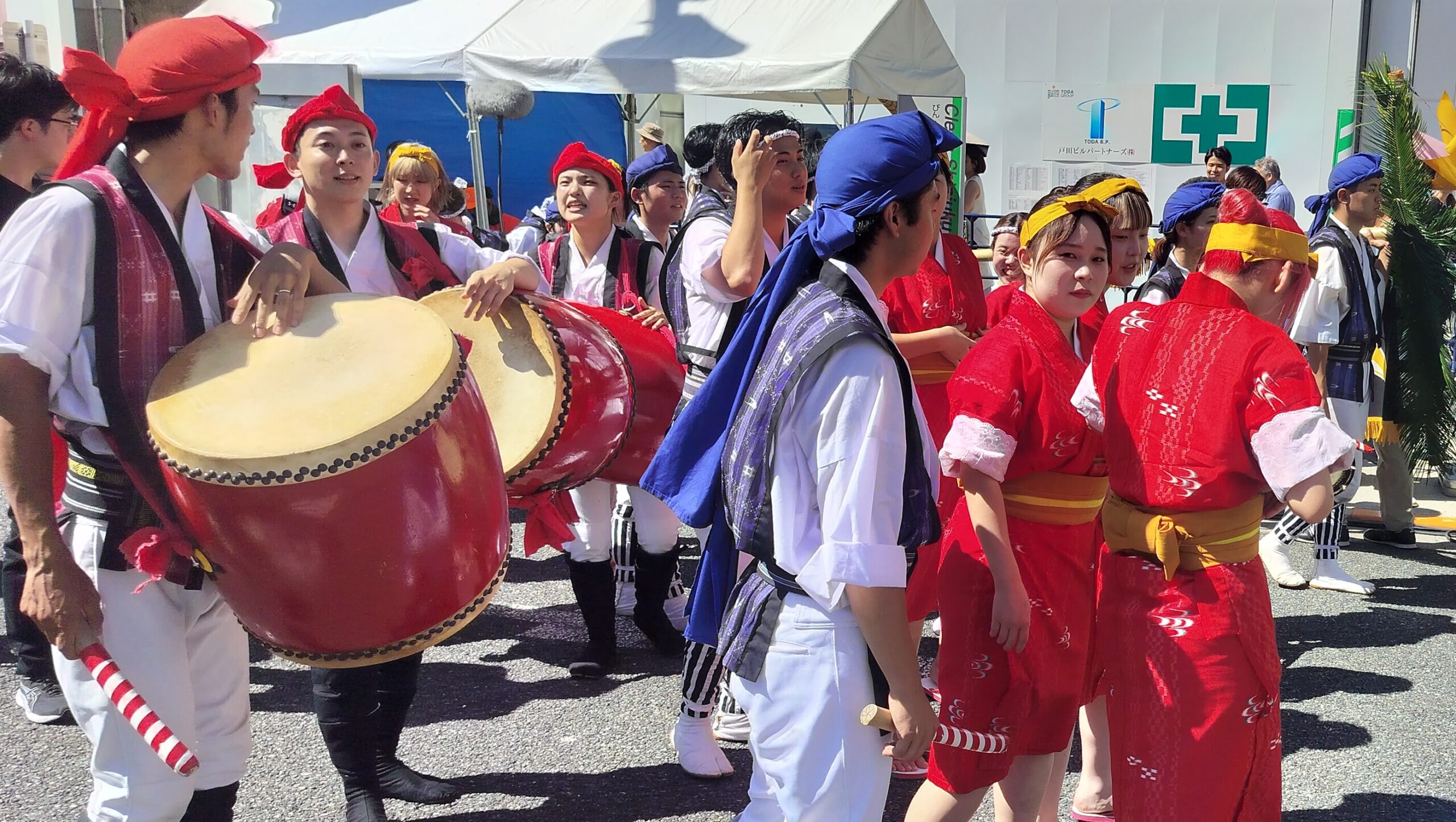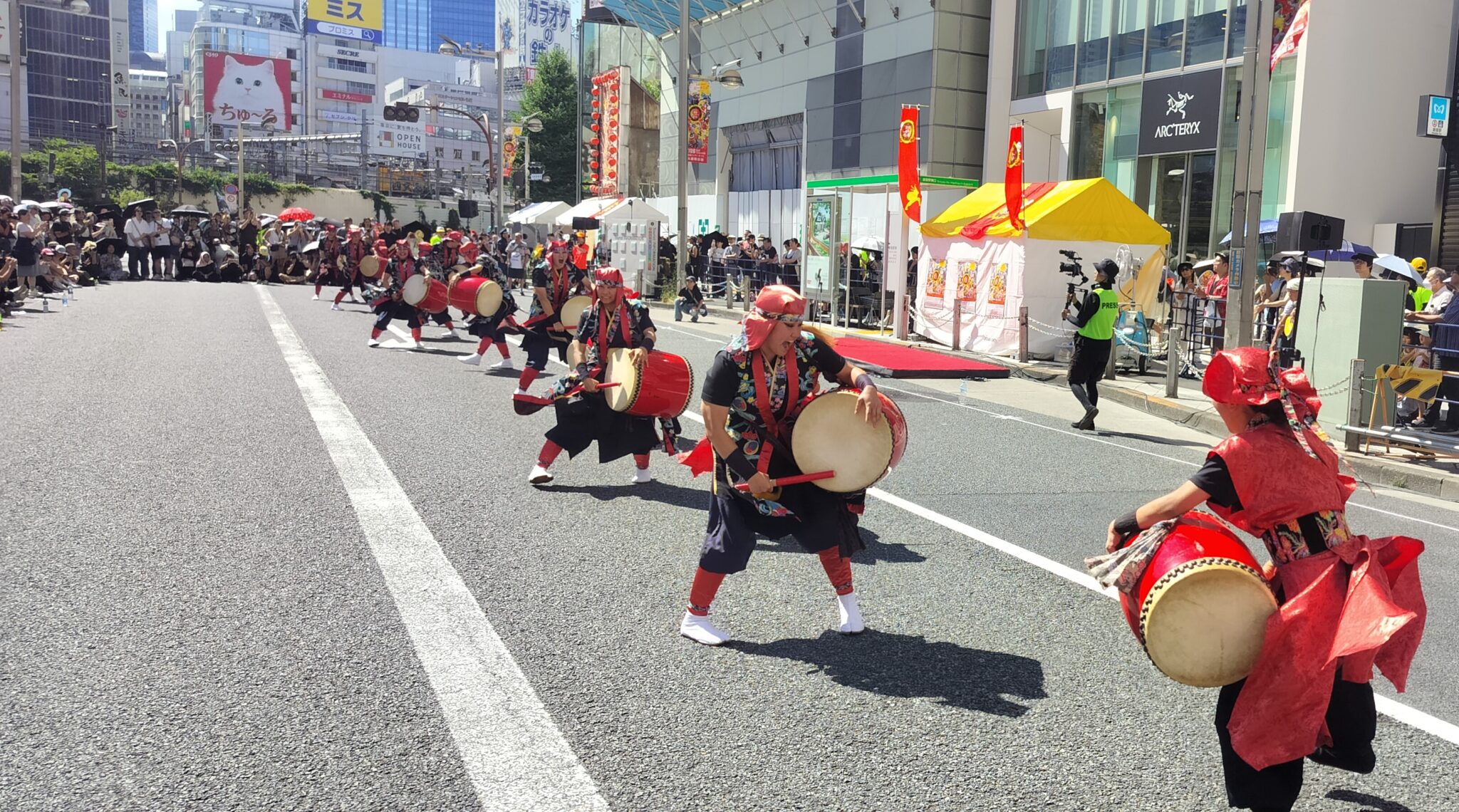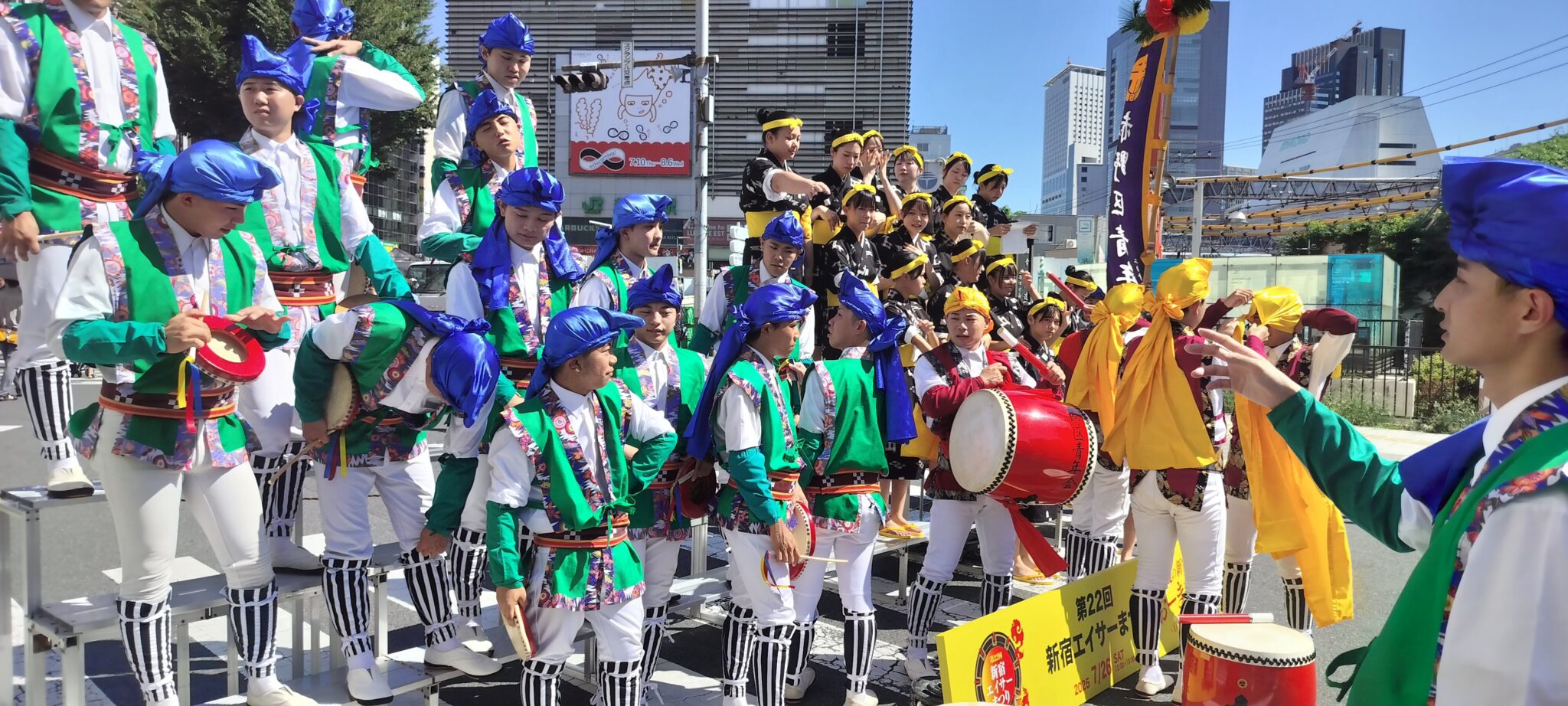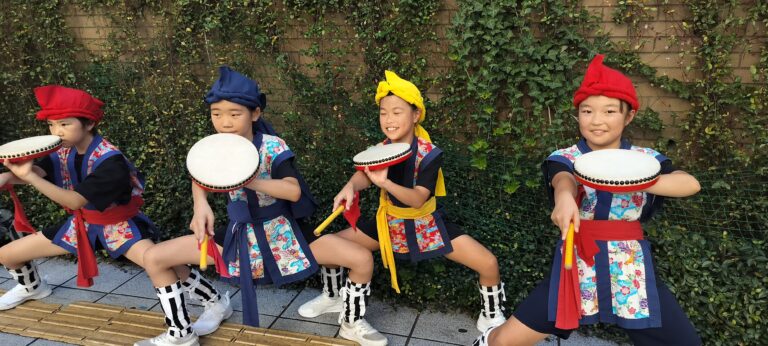

Japan, where ancient traditions merge seamlessly with modernity, is globally renowned for its vibrant culture and colorful festivals. Just as Nepal’s Dashain inspires a sense of family, community, and celebration, Japanese festivals also emphasize emotional connection and communal bonding.
During the eve of Dashain, I happened to be traveling in Japan, and by chance, I attended the Eisa Festival in Shinjuku, Tokyo. The dancers in colorful costumes, the deep beats of the taiko drum, and the sweet melodies of the sanshin instantly reminded me of the festive joy of Dashain back home.
Japanese culture reflects a unique blend of discipline, respect, and communal spirit. On Shinjuku’s busy streets, people ride trains using smartwatches and QR codes—a glimpse of a technologically advanced nation. Yet, at the Shinjuku Eisa Festival, the sound of taiko drums and dancers in yukata transported me to the imagination of Nepal’s Tihar celebrations, where madal drums accompany Deusi performances.
Dashain came vividly to mind: wearing new clothes, enjoying Malshree tunes, receiving tika and jamara, visiting relatives, and villagers together putting up swings and enjoying festivities. Japanese festivals similarly celebrate respect for nature, ancestors, and community. During Dashain, tika and jamara symbolize blessings and family well-being, while in Japan, festivals like Obon and Hanami convey the same communal and spiritual sentiment. The collective dancing and energy I witnessed at the Eisa Festival reminded me of the excitement of bringing Phulpati into Dashain celebrations.

Exiting Shinjuku Station’s east exit, the streets were alive with locals in colorful attire, gathered for the festival. The Eisa Festival, based on traditional Okinawan Eisa dance linked to the Bon Festival, created the impression of entering a magical world. Streets were filled with dancers wearing hachimaki and traditional costumes.
The deep sound of taiko drums touched my heart, while the sweet rhythm of the three-stringed sanshin brought life to the atmosphere. Young dancers performed energetically, wearing colorful shirts and hachimaki, moving collectively—reminding me of Nepali village youth dancing to madal and drums during local festivals.
My guide, Aiko, explained that the festival began in 2001 and has grown into one of Tokyo’s largest summer events, attracting over a million spectators and featuring more than 20 Eisa dance teams. After a group finished their performance, applause echoed through the streets, mirroring the communal joy of Nepal’s festivals.
Sampling Okinawan delicacies like Sata Andagi, Goya Champuru, and Takoyaki, I was reminded of Nepalese sel roti, anarsa, and festive mutton dishes. Aiko also explained the cultural history of Okinawa and the significance of Eisa dance, which reminded me of the tradition of welcoming guests to homes during Dashain and Tihar. Seeing youth dancing with colorful flags lifted my spirits.

Japanese festivals carry deep cultural significance and convey messages of community unity. Among them, Obon in mid-August sees families returning to villages, cleaning ancestral graves, and participating in Bon Odori dances under lanterns, while fires and floating paper lanterns guide ancestral spirits, honoring the cycle of life and death. Hanami, in March or April, celebrates cherry blossom beauty with picnics, tea ceremonies, and cultural programs.
At night, “Yozakura” illuminates the blossoms, symbolizing the beauty and transience of life. Gion Matsuri in July, Kyoto, features a grand parade of decorated floats accompanied by traditional music, dance, and kimono-clad performers, praying for community unity, health, and prosperity, comparable to Nepal’s Machhindranath chariot procession. Tanabata, on July 7, involves writing wishes on colorful papers hung on bamboo trees, along with parades, decorations, and fireworks, symbolizing love, aspiration, and unity.
Nepali and Japanese festivals share striking similarities. Dashain tika and jamara strengthen family bonds, while Obon and Eisa Festival foster communal unity. Traditional attire—dhaka topi and new clothes in Nepal, yukata and hachimaki in Japan—accompanies music and dance, such as Malshree and madal in Nepal and taiko and sanshin in Japan.
Culinary traditions are equally central, from mutton and sel roti in Nepal to sata andagi and goya champuru in Japan. Both cultures celebrate community through festive parades, chariot pulling, and rituals. Spirituality remains central, with deities worshipped in Nepal and prayers offered at shrines in Japan.

At Shinjuku Eisa Festival, memories of Nepali festivals returned vividly. Seeing an elderly woman dancing with her granddaughter reminded me of the Sakela dance of the Rai community or Deuda during Gaira festivals. Japanese village-like celebrations resonated closely with Nepali customs.
Aiko’s insights emphasized the shared tradition of celebrating festivities with family and welcoming guests, reinforcing the universal value of togetherness.
Despite cultural differences, Nepali and Japanese festivals reflect unity in human values. The communal energy of Shinjuku Eisa Festival and the familial harmony of Dashain convey the same message: festivals act as bridges connecting communities. Japan’s disciplined and respectful culture highlighted the warmth and hospitality of Nepalese traditions. Experiencing Shinjuku Eisa Festival offered a glimpse into Japan’s cultural depth.
The spirituality of Obon, the beauty of Hanami, and the grandeur of Gion Matsuri evoked memories of Nepalese festivals’ diversity. Returning from Japan, Dashain celebrations had already begun back home. Wishing everyone a joyful Dashain!